Conversations

I wrote a text for the book Found Footage & Collage Films –– The Artist's Voice. Here is an excerpt:
I have been interested in notions of embodiment—embodiment of memory and film as embodiment of affect. I have made a series of structural, flicker films that I once tried to describe as one version of a physical cinema. How I hoped for my films to create an embodied response in the viewer, whether it is euphoria, a sense of seduction, a meditative state, a dream state; some viewers have experienced a sense of threat or abject refusal. One of many aspects I love about cinema is that it can create feelings: of relating, of empathy, and perhaps most importantly, of understanding—a knowing by way of feeling. Archives can only ever offer incomplete fragments of the past, just as any pre-existing film shot can only ever offer fragments of a moment. Working with fragments as a strategy comes naturally to me. I am invested in the history of mixed, transnational, Western-Japanese subjectivities, but records for this particular history are scattered across different archives in very different locations, even continents—if there are any at all. The notion that things pertain to only one historical narrative is too small, as is the notion that there can only be one historical perspective. Retrieving fragments and relating them across contexts is a default mode of thinking, as is the forging of links between seemingly disparate or unrelated factors. There is growing scientific evidence for inherited trauma, so I imagine that there is also a sense of inherited memory. When looking at an archival shot, taken long before my lifetime, I think there is an alternate kind of memory work at play—not in the sense of experiential memory and what I remember from my own past—but a sense of deep personal relating, understanding and perhaps even knowing. This is one fiction I have imagined as to why I have felt such strong responses and connections to certain historical material.
Click here to find out more about the publicationback to top

On 11.12.2024 , I participated in a talk titled “The Düsseldorf Art Academy and Joseph Beuys, Feminism and the Teaching of Katharina Sieverding at the UdK Berlin,” held at K21 art gallery, as part of Katharina’s solo exhibition there. As I approached the park surrounding the K21 art gallery, I felt a deeply familiar pull; a summons; the same calling I felt as an art student, as a member of Katharina Sieverding’s class forum. I always knew that my time with Katharina was profound, and that it deeply impacted me in countless ways. Yet, as I walked through her exhibition, I realized her influence on me had been much more powerful than previously thought. I can‘t begin to express in words the overwhelming feelings that was my visit to the exhibition. How do you describe a sense of time, over 20 years, collapsed into a single moment? I can’t begin to describe the myriad ways that this woman, warrior, artist, teacher has impacted the fabric of my thinking. And in a sustained sense, also my process and becoming. “Mama Katherina” we endearingly called our professor, amongst ourselves, with a pretend Italian accent. She was our matriarch, our guardian. We — a motley bunch of mostly women, queers, and other minorities, held a deep love and respect for her. In the talk, Sabeth Buchmann, Natascha Sadr Haghighian, Filipa César and I reflected on Katharina’s work, education, and legacy. It was amazing to look back at our collective time under Katharina’s wings. We could have talked all night. Emblematically, new connections were made, new impulses set, and new conversations started. Filipa and I contributed to the exhibition catalog with a conversation.
Click here to read Filipa and my conversation.back to top
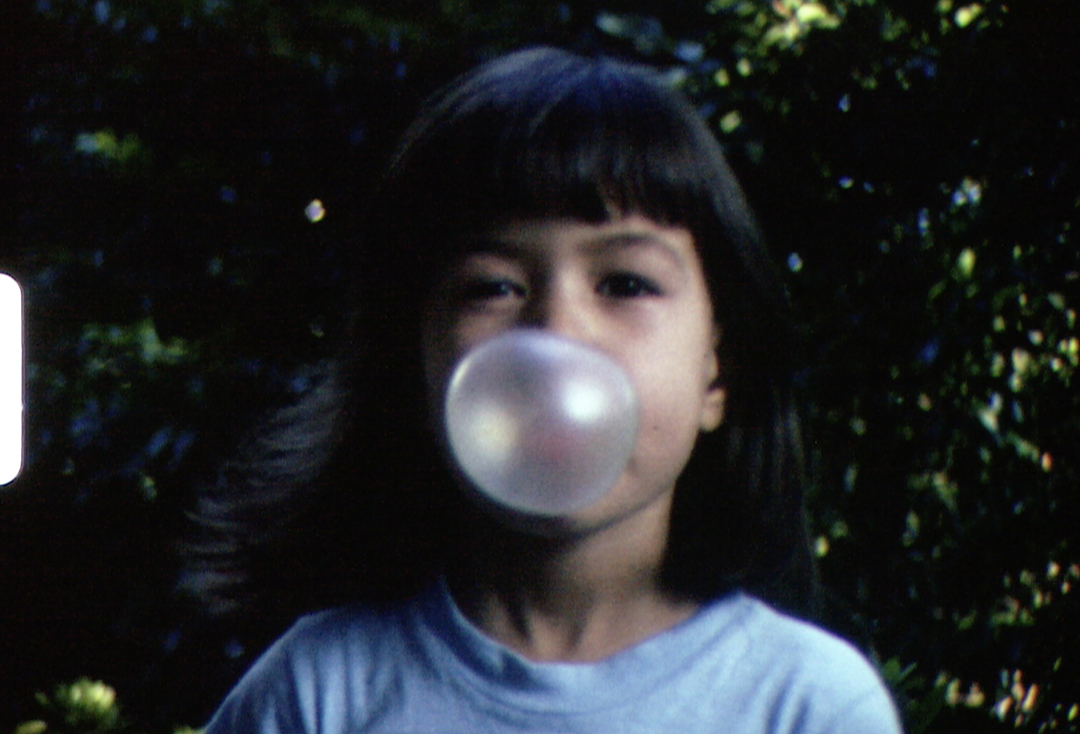
Film historian and curator Alejandro Bachmann did an interview with me for Found Footage Magazine. Here is an excerpt:
In my single frame edits, every still frame has a dual existence; one image is always altered and different from itself, fading in and out of its own duality. But more importantly, every still image also crossfades with another still image (a different motif) which, respectively, also exists twice. As the editing style progresses, more image couplets are stacked on top of each other, and what a viewer sees, literally, is an entangled, interconnected multiplicity of images—appearing only in relation with others in abstract formulations, continually different from themselves. The boundaries between images are collapsed, they bleed into each other, and transitions between sequences crossfade in a way that doesn’t allow the viewer to see when a shot begins and ends. Doing away with the clear-cut strobe of structurally alternating images that are separate from each other, all sequences begin to appear in rippling, rolling, or surging waves. Viewers have responded to my flicker films with euphoria, fully embracing the experience, which some have called psychedelic or internal illumination. I can’t speak for others, but will say that for me, flicker films can induce—even if only for short sips of time—an oceanic feeling.
back to top
Something Special
I edited a Super 8 home movie of my friends to the song "Something Special" by Roland Alphonso
back to top
Temenos Home Movie shot collectively by:
Audrey Lam, Bert Jacobs, Burak Çevik, Devon Nadine Singh, Dilşad Aladag, Enrico Camporesi, FP Boué, Gaby Shorr, Georgia Korossi, Gunter Deller, Helga Fanderl, Herb Shellenberger, James Edmonds, Joanna Raczynska, Keegan O’Connor, Mónica Baptista, Nzingha Kendall, Oath, Pedro Gavina Maia, Petra Graf, Robert Beavers, Sacha Robayo Kennedy, Sarah Dockhorn, Silvia Das Fadas, Sylvia Schedelbauer, Toni Hildebrandt, Yue Zhao
June 26 to July 1, 2024
Lyssarea, Arcadia, Greece
Movie inlcudes excursion to Olympia.
Camera used: Canon 310XL
Film used: Kodak VISION3 50D Color Negative 7203
Processed and digitized at Cinegrell, Berlin
Super 8 shot at 18 FPS & single frames
Digitized to 24 FPS
Edited by Sylvia Schedelbauer
back to top
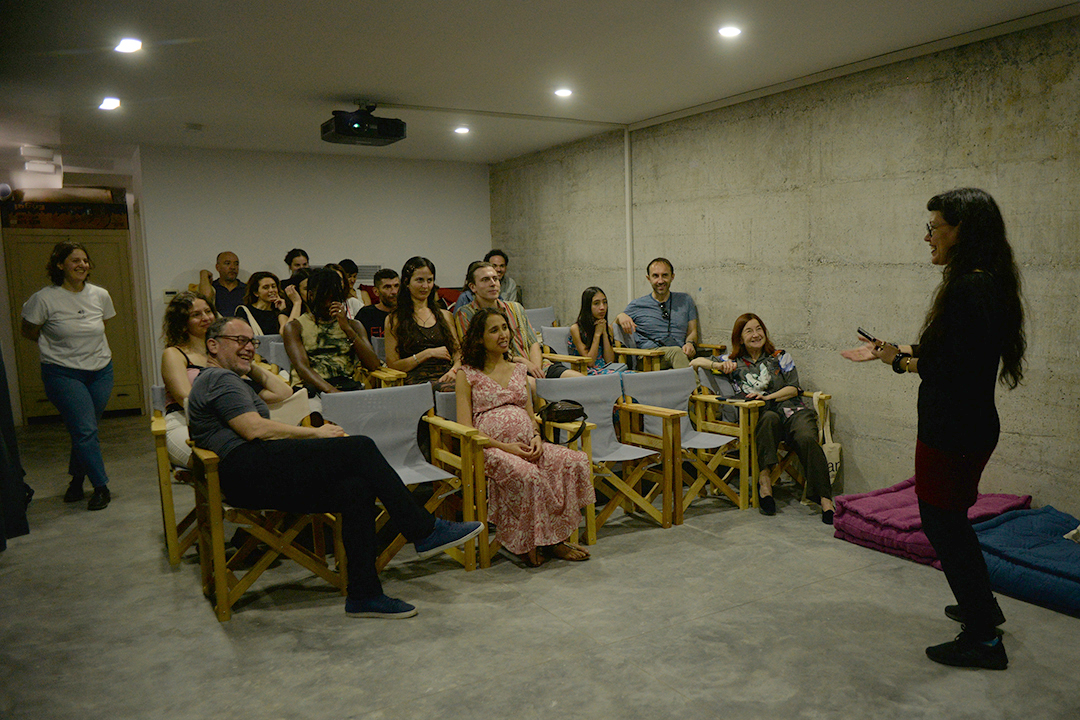
I was invited to contribute to Ekrani i Artit festival at the Art House in Shkoder, Albania, with a carte blanche. The theme of the festival was Solitude and Multitude, and I decided to present a short film program titled Personal Narratives, Family Myths. Here is an excerpt of the text from my introduction to the program:
Family narratives, in the broadest sense of the notion, shape our identities as individuals. Family histories are constituted by the experiences of relatives and ancestors, but also of those who we select by affective relation, as chosen kin. They are the stories told, whispered, and handed down; but also those erased, obscured, forgotten; and those retrieved, reconstituted, reimagined.
Click here to read the full text and see photos.
back to top

Film critic and curator Ejla Kovačević did an interview with me for UltraDogme, and I felt very grateful for her interest in matters of gender equality and women's representation. I was also very happy that we got to speak about my latest films Oh, Butterfly! and In the Beginning, Woman Was the Sun. Here is an excerpt:
Hiratsuka’s poem alludes to religious mythology as well as historical facts that women, indeed, used to have autonomy and power. In the beginning of my film, we predominantly see images of the moon—this also directly quotes Hiratsuka’s poem, that women today were like the moon, “living dependent on others, reflecting their brilliance.” According to the Global Gender Gap Report, conducted by the World Economic Forum, Japan has been fluctuating somewhere between the 120th and 130th places in the past decade or so, out of 146 countries surveyed. While more women than ever before have entered the workplace, Japan has one of the lowest levels of gender equality among industrialized countries, and business opportunities remain geared toward men. Over the first half of the film, images of the moon dominate that of the sun, but over the course of the second half, the sun comes out more strongly, and the film ends with shots of solar flares. With the intensity of the fierce flicker between the sun and the moon, I wanted to metaphorically translate the struggle for social progress and gender parity.
Click here to read the interview.
back to top
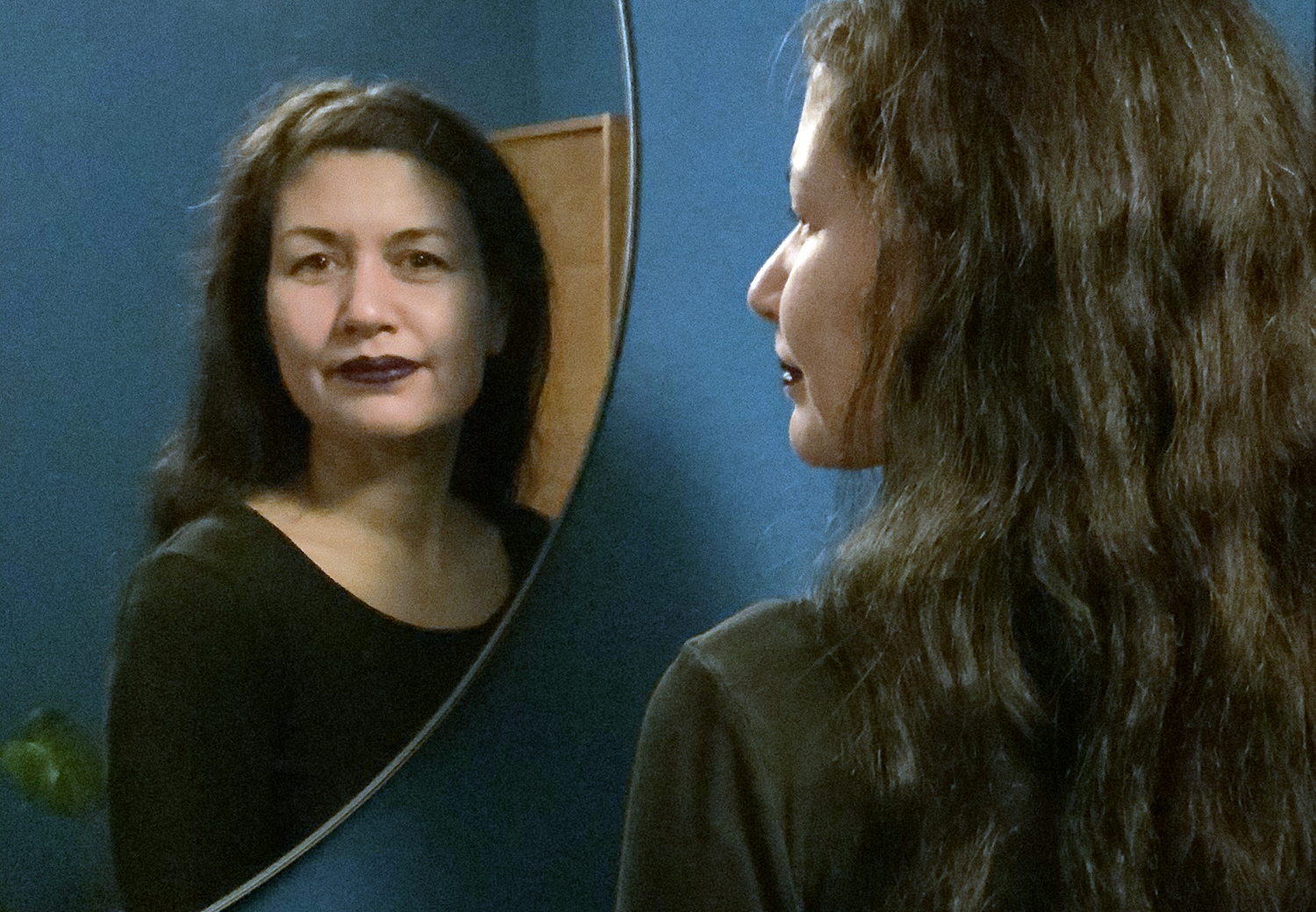
Here's an excerpt of the interview animator and visual artist Ivčo Ružić did with me for kulturpunkt.hr.
I moved to Germany when I was about 20 years old - and one of the first things I noticed is how the light was different. It took me forever, possibly even decades, to get used to the fact that there is less sunlight in Germany and that the light looks more yellowish. For many years, even now, I still miss the Pacific light - it’s very bright, very white in the summer, and it makes everything look different - the way you look at nature, landscapes, or even a city. When I moved to Berlin I felt I also really missed mountains and the ocean and various landscapes from Japan. Berlin has its own charm, its plain and flat landscape, and so I realized that nature and landscapes are another aspect of how you relate to time and especially a place. It's not just culture, it's not just identity, it's not just the people, the food and the way you live, but it's also the larger landscape that surrounds you, how you feel at home in it, how you feel connected to it and how you take pleasure from nature. And it took me a long time to appreciate the German colors, I mean they are also beautiful, just entirely different. That was another aspect in trying to deal with these questions of being in a place and identity, identifying.
Click here to read the interview.
back to top

Presence, Issue 2: The Sea. Conceived/curated/created by musician Liz Harris (Grouper/Nivhek). It was a great pleasure to be in conversation with Omar Kasmani. Here's an excerpt:
I liked the title, Labor of Love, because it acknowledges love as work — and the work love does. I was aware of its historical references to the socio-political campaigns from the second wave feminist movement(s) that discussed the invisible and unpaid labor that women had performed historically; labor that, to this day, remains unpaid, underappreciated, and undervalued. There was something that resonated with my practice as an experimental filmmaker, and with my personal struggles to keep going for over a decade and a half after graduating from art school. My films didn’t make money, and the financial support was so intermittent, rare and unreliable, it was by no means easy to keep going.
Click here to read a version of the text.back to top

Here is an excerpt from an interview in English, by Enes Serenli, Mert Mustafa Babacan of Othon Cinema. Translation into Turkish by Dilara Şengül.
Over the course of years, from film to film, I moved away from the flicker in its strictest form. I tried to create complexity by adding multiple layers of images, various zooms, fades, superimpositions, a lapping effect (images seem to lick and roll across the screen like liquid), a vortex effect (the images slowly seem to swirl in and around themselves) and simultaneities (the viewer may feel like they being drawn into the image and at the same time being pushed out of the image). I’ve used various frequencies and over time, I’ve slowed down the rhythm so much that I’d say my recent films aren’t strictly flicker films anymore: the effect is closer to a throbbing or pulsating of the images rather than the clear-cut strobe that is so well known and associated with the art form.
Click here to read the full interview.back to top
Home Movie made with Himanshi Parmar and Katrin Emler: The Jayalaxmis 102-301.
The 'title' of this video is taken from the name of the eponymous apartments we stayed in: Jayalakshmi Apartmemts 102 and (later) 301, in Malleshwaram, Bangalore. Little did we know upon arriving in India that Katrin, Himanshi and I would get along so well – and that we'd spend almost every free minute together. The unexpectedly intense and amazing beginning of new friendships and coming collaborations!
Click here to see a video seriesback to top
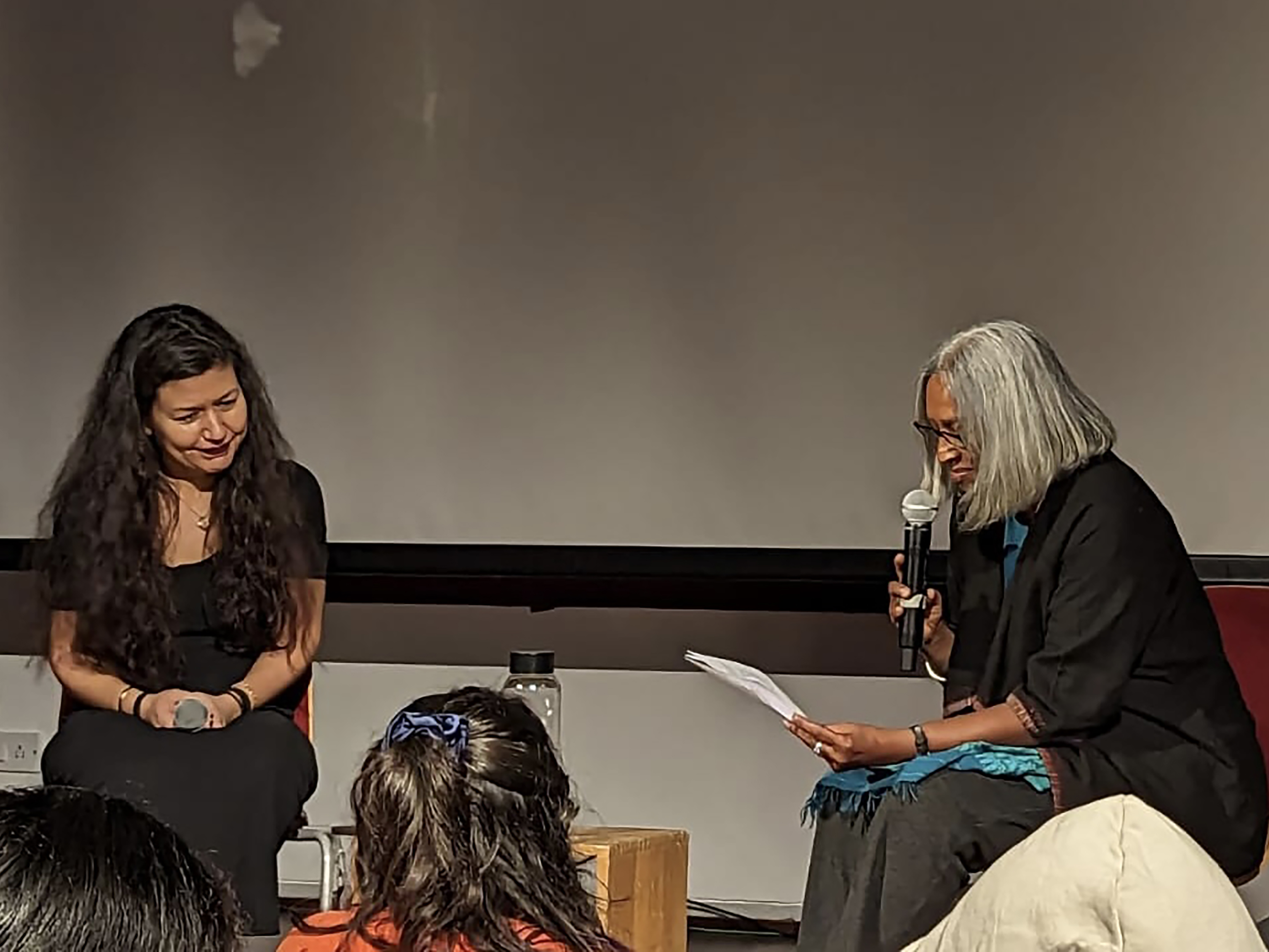
Ayisha Abraham and I at the Q&A (photo by Himanshi Parmar)
Here is an excerpt from Ayisha Abraham's introduction to our Q&A at Experimenta 2023:
Sylvia’s films seem to span a taut canvas of the accessible and the difficult. In a simple, straight forward narrative, she chronicles the journey across oceans, and a maelstrom of emotions, as her parents break the boundaries of love and work, to venture across cultures, to trail blaze new paths. In the difficult films, strobe lights refuse to settle on image or story, defying any logic of montage and meaning-making, revisiting found footage in its original form of fragments, and momentary slices and splices. Her body of work, evokes the body politic of people, and natural ecosystems, bringing us closer to what is found and what is lost, not just in film and memory, but in life and in existence itself. Be it in the felling of forest trees, and my favourite by the way, is the abstraction just before the ominous last image of a saw before it fells the tree, that crashes to the ground. It no longer remains ‘abstract’ or ‘anti-narrative’, or ‘experimental’ in its non-meaning mode, but it clinches an ethical outlook to the ways of the world and says it all, simply, in essence - the rapacious colonization of the human upon natural worlds.
Click here to see read Ayisha's full introductory text and documentation photosback to top
Teaching the Interim Class at Srishti has been one of the most humbling and rewarding experience I have had, with highly receptive, curious, generous and very talented young students. There was laughter, some tears, some fears—every single student pushed their own limits and transcended boundaries to create something entirely idiosyncratic, finding their very own cinematic language and personal expression. It is so rare and precious to open up a highly conducive exchange and conversation, and I am very curious to see what the students will be up to in the future!
With thanks to the Goethe Institute Bangalore for bringing me to India; Ayisha Abraham, Payal Kapadia and Sohrab Hura who generously made time to speak with/in our class; and special thanks Priya Sen who acted as assisting professor at Srishti and was with us throughout the journey.
Click here for an interview and to see the students' videosback to top
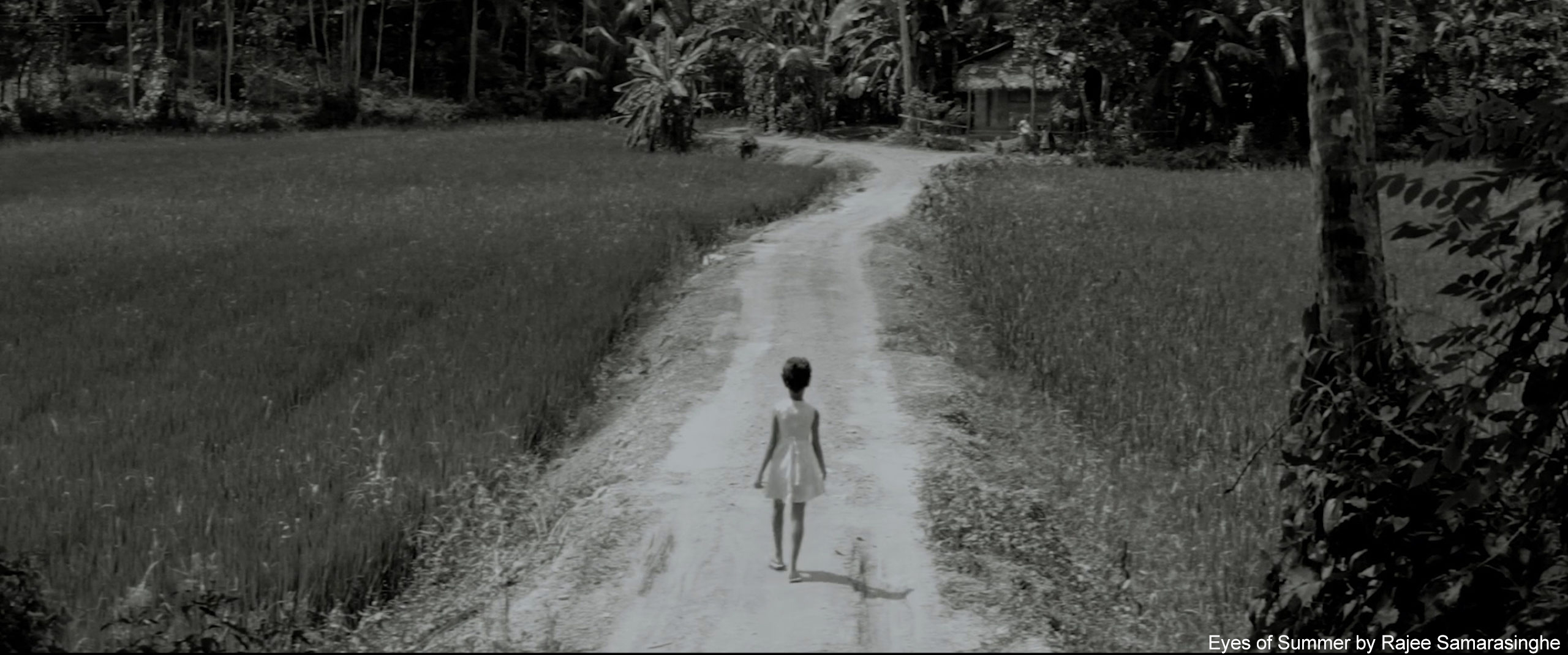
I am part of the exhibition Growing Like a Tree: Sent a Letter at the Sunaparanta Goa Centre for the Arts, curated by Bunu Dhungana and Sadia Marium Rupa. Here is an excerpt from the exhibition announcement:
The title of the exhibition draws from Dayanita Singh’s work Sent A Letter (2007) that was exhibited as a citation in the first iteration of the show. Expanding on the idea that an unopened photo-book can enfold within it diaries, exhibitions and correspondences, Growing Like A Tree: Sent A Letter returns to this source to evoke the tactile act of composing letters. It gathers images and sounds as dispatches from artistic journeys across different contexts, highlighting the shared moments of nurture, growth, decay, pollination and memory-making.
Click here to see read the full program text and documentation of the exhibitionback to top
Click here to read the oral history
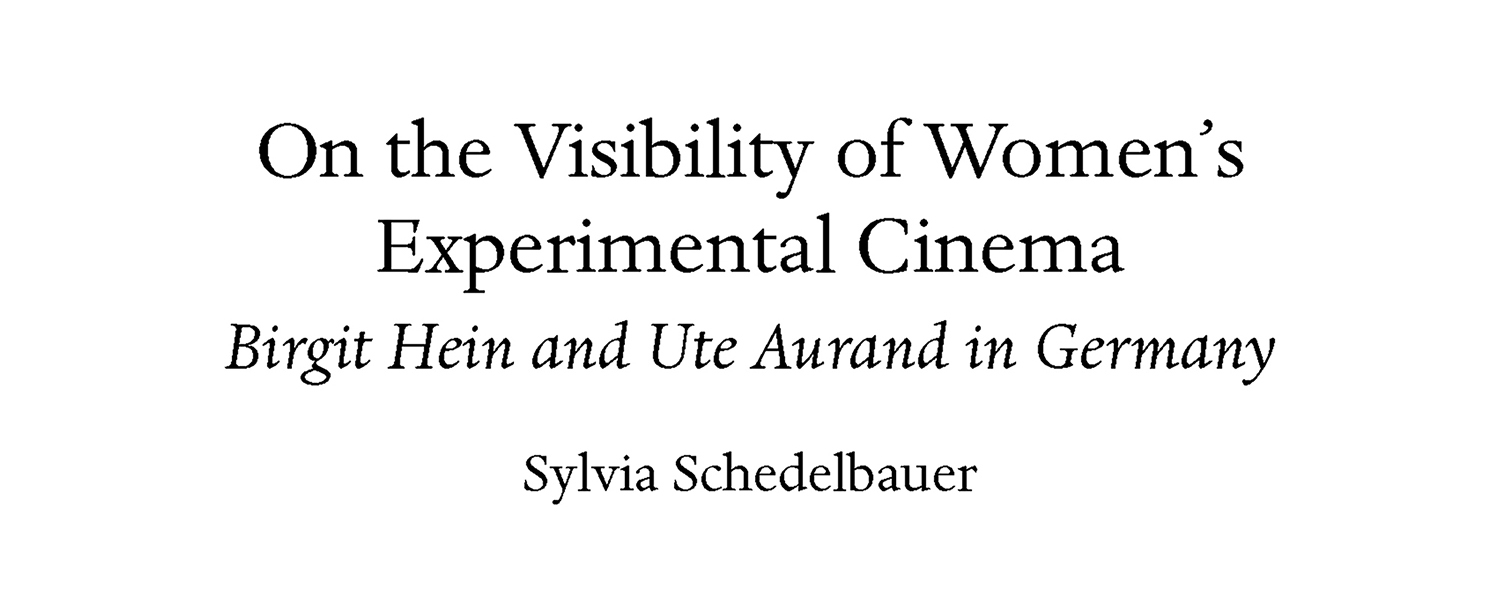
I made an oral history with Birgit Hein and Ute Aurand. This is an excerpt from my concluding remarks:
In 2001, when I went back to University, approximately 70% of students at the University of Arts Berlin were female. Gender equality was far from acceptable: 38% women had jobs in lower positions, 26% in middle teaching positions, and only 15% of master classes were led by women (Haase, 2007). From my perspective, part of the problem was rooted in the fact that there were not enough female role models, and that, as Ute Aurand mentioned in our discussion, women didn’t have the same networks and support systems to tap into as their male counterparts.
Click here to read the oral historyback to top

I wrote an imaginary letter to Paul Clipson for Light Cone's 40th anniversary. Here is an excerpt:
You know that I never like to reveal much about what I’m working on, I used to say that if I speak about it, I won’t do it…almost to a superstitious degree. You could relate, even though our films were so different. And we laughed when we realized that we had influenced each other…after watching our films together, usually at the NYFF, or at ATA. I know that I’ve used shots of a mantis, a moth, and a butterfly because I saw so many spiders and flies in your films. So every time I introduce an insect, I consider it my “Paul moment.” Remember when you suddenly realized that you were shooting extreme close-ups of eyes after watching my work? We were happy about these more obvious impacts, and thought it was healthy to admit the influences that directly or indirectly shape us. That it’s a beautiful thing, a kind of self-awareness of the own process and development.
Click here to read the letterback to top
Temenos 2022

how does the Filmmaker’s Imagination
release the use of the frames? the number
of frames used
how do the frames black and white lengths
reach the spectator’s imagination?
From the Temenos Program notes 2022 Click here to see more photos
back to top
The Singing Whales
..
.
Last night I dreamed the whales gathered around my boat
last night I dreamed the whales gathered around to sing
.
.
Home movie shot collectively with Aily Nash, Fern Silva, Jackie Wang, Sky Hopinka and I in Cape Cod, 10/2019.
Super 8 handprocessed at AgX Film Collective, Boston, with kind help of Stefan Grabowski.
The film footage is paired with a song written, performed and recorded by Jackie Wang.
AgX Film Collective
Jackie's blog.
.
.
Here's a short filckering sketch using above footage, paired with a digitized cassette tape recording, made by Sky Hopinka .
.
What is your song for?
What is your song for?
What is your song for?
What is your song for?
.
.
Click here to see photos
back to top
A City in Daily Loves: An Affective Geography of Post-Migrant Berlin
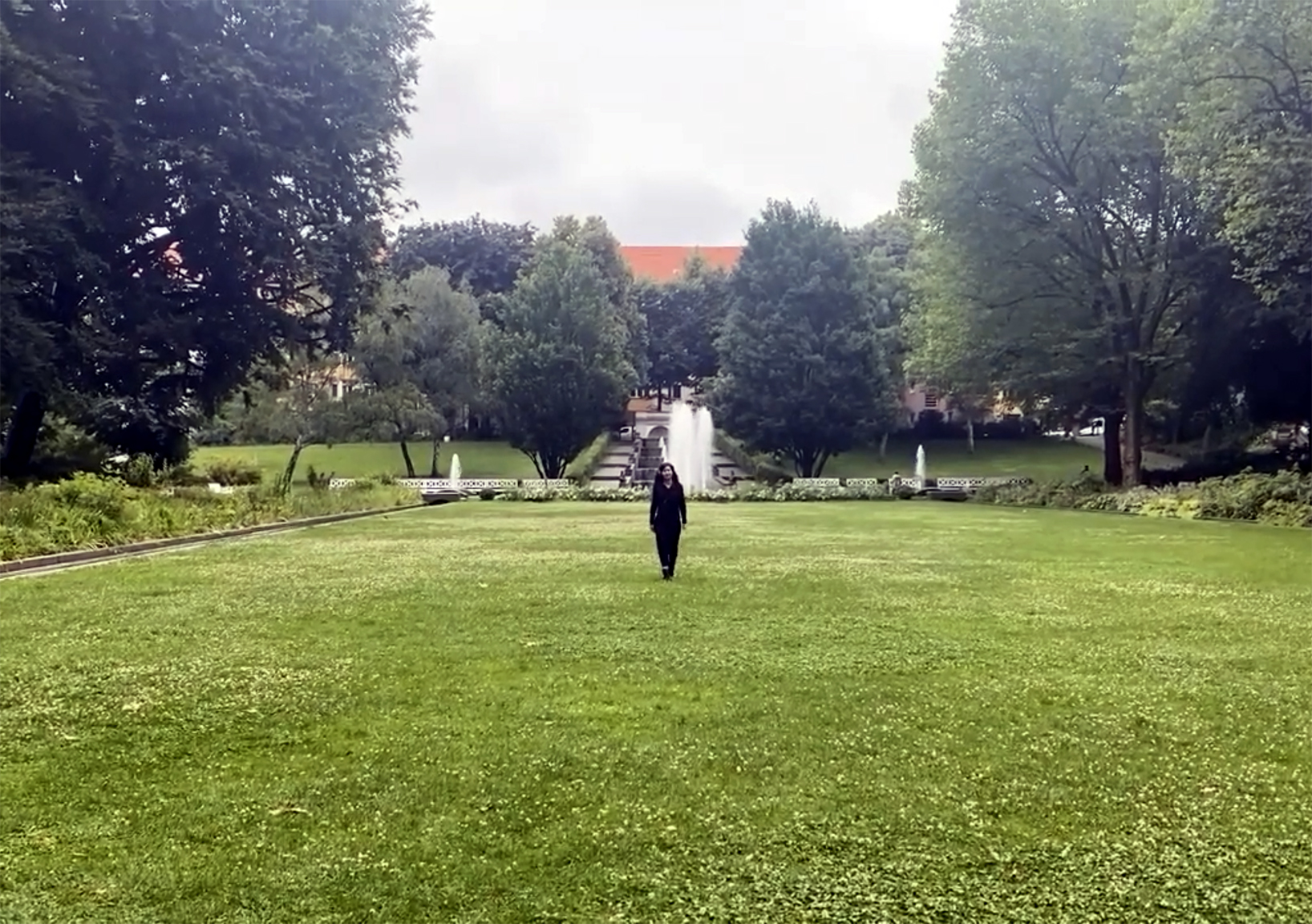 I'm featured in a video-essay that "approaches ideas of postmigrant feeling and be/longing in Berlin," made by Omar Kasmani.
I'm featured in a video-essay that "approaches ideas of postmigrant feeling and be/longing in Berlin," made by Omar Kasmani.
Click here to watch the video essay
back to top
Rad Home Movie
Home Movie made together with fellow Radcliffe Fellows 2019/20.
back to top
The Stories We Tell
Photo caption: I only ever met my Japanese grandmother once, for about an hour. This is the only photo ever taken of us together – it shows three generations. I was born and raised in Japan, yet I never met my Japanese family. When I was 25, I invited my mother to go on a trip to the Tohoku region, with the intention of passing by her hometown, a place she had never returned to since she left it at 17. According to her, she was disowned from her family when she married her German husband, my father. On one hand, this photo depicts my maternal lineage, but on the other, to me, it also represents the irreparable family rift that so deeply marked my experience.back to top
Letters
Aily Nash and I made a contribution to this book together. Here is an exceprt from the letter I wrote:
The first short film I made, Memories (2004), was an attempt at constructing my family history. My German father moved to Japan in 1958 and lived there for 36 years. I don’t know where or how he met my Japanese mother. The mystery and secrecy around my parents’ lives before I was born—combined with the fact that neither of them ever wanted to speak about their respective childhood experiences during WWII in Germany and Japan—just made me more curious. But at some point, I realized that the family secrets would always remain secrets, so I began thinking about history and memory in more general terms. Maybe I was looking beyond my own family history for a transnational history that pertained to my own identity. I found that history was usually narrated through a monocultural and national lens, and it seemed full of erasures and exclusions. I feel the desire to look beyond some of these gaps, to connect my experience with those that came before.

back to top
AFA 50
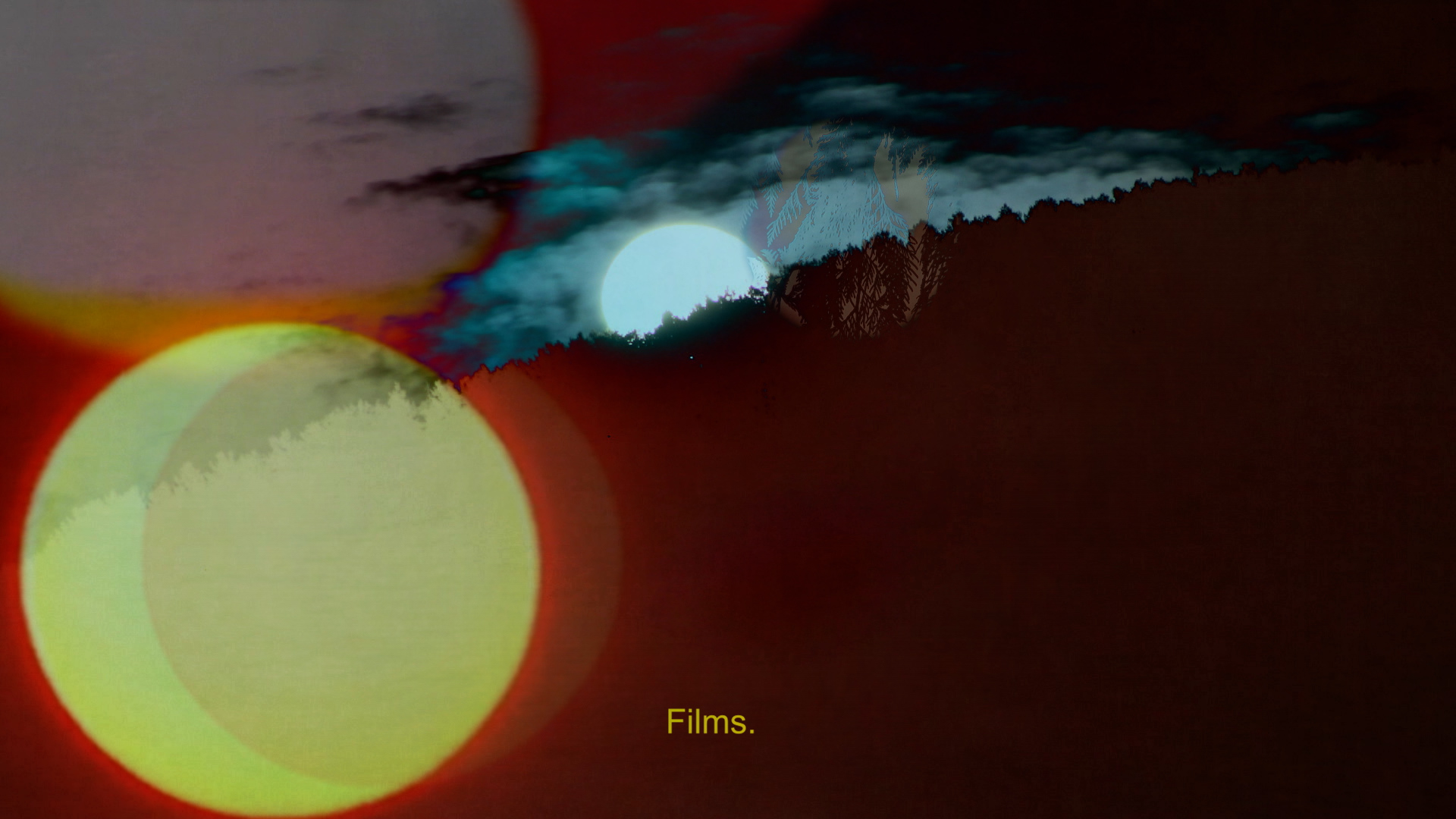
Click here to watch the anniversary video I made for Anthology Film Archives' 50th anniversary. 12/2020
For more info about the anniversary click here.
back to top
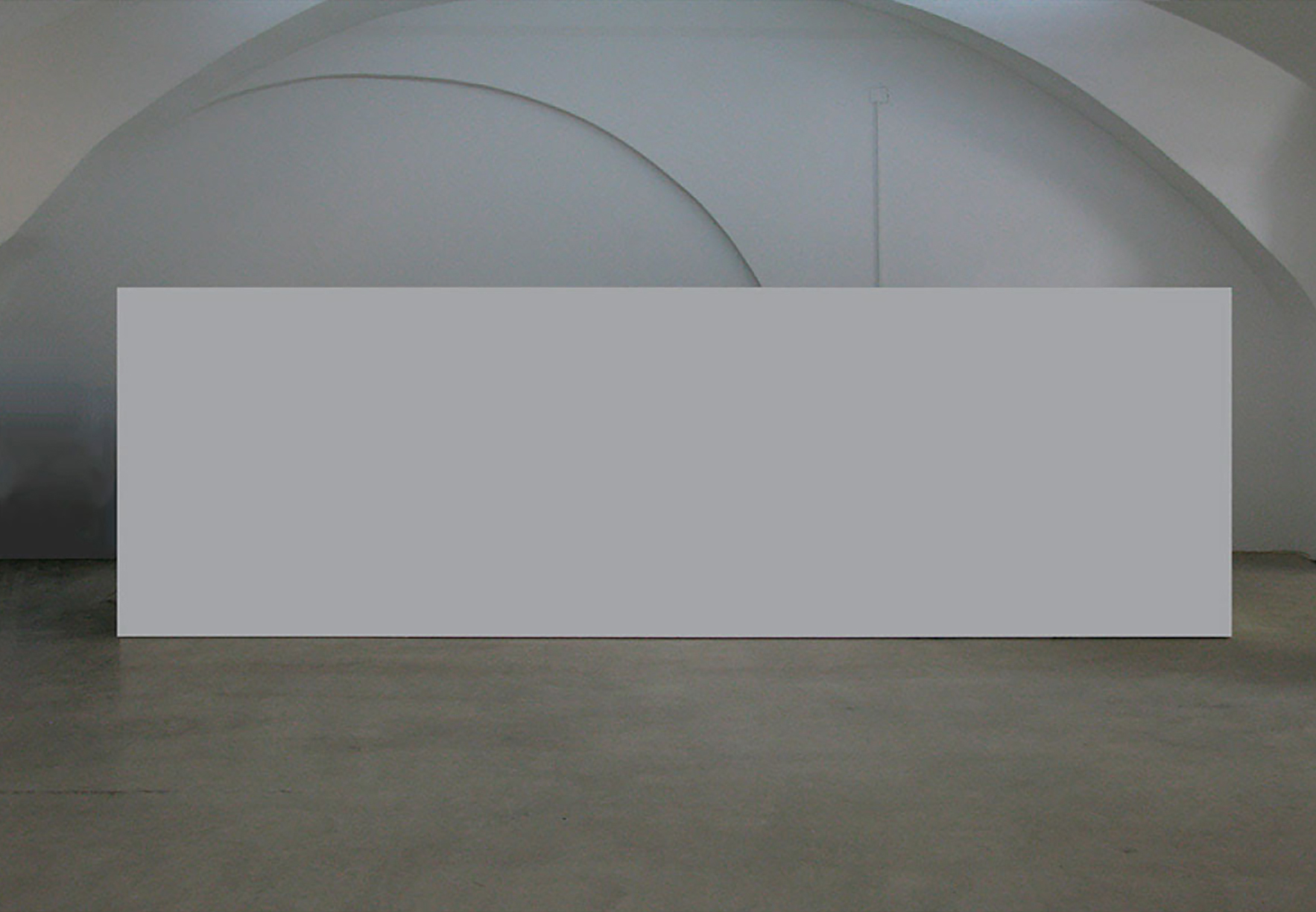
nownownow – On the works of Sylvia Schedelbauer
Excerpt from a text by Alice Butler for the exhibition booklet at Grazer Kunstverein.
Spring 2019, curated by Kate Strain.
Schedelbauer tells of how she adopts the flicker in some cases as a means of facilitating what she would like to do with footage that she finds in a compromised state. The flicker enables her to extend out the duration of a scene for example – it means she can impose her will over the material rather than the other way around. Schedelbauer says however that she is also driven to find ways of making this so-called found material ‘speak more’, a phrase that reveals a desire to uncover hidden or latent significance in largely discarded footage. This connects strongly to the idea that images which are no longer, or in fact were never, in the public consciousness have particular worth because of what Bruce Conner describes as, ‘a philosophical premise that’s been around for a long time: if you want to know what’s going on in a culture look at the things that everybody takes for granted, and put a lot of emphasis on that rather than what they want to show you.’
Click here to read the full text and see documentation photos of the exhibitionback to top
Short Talk

back to top
